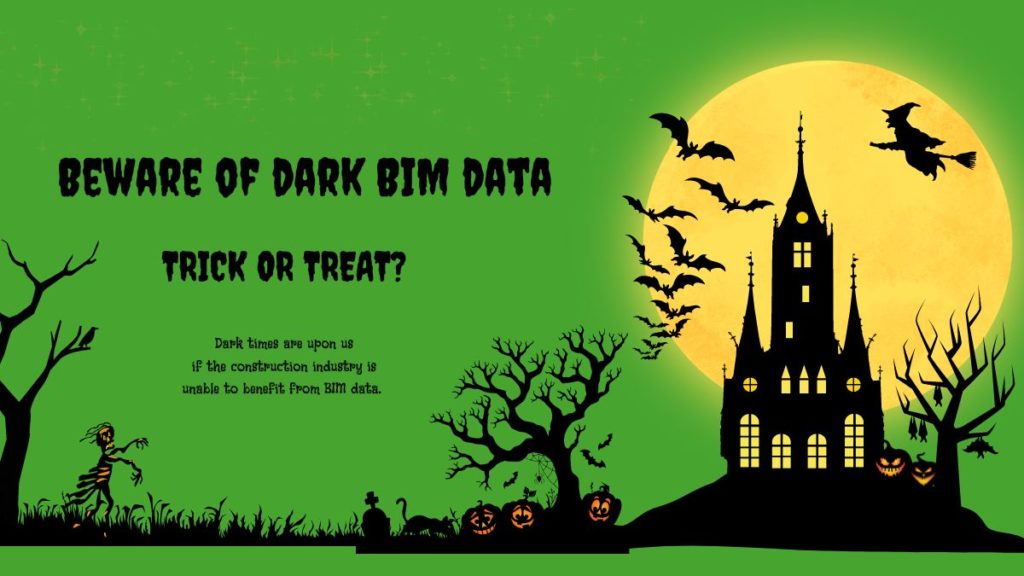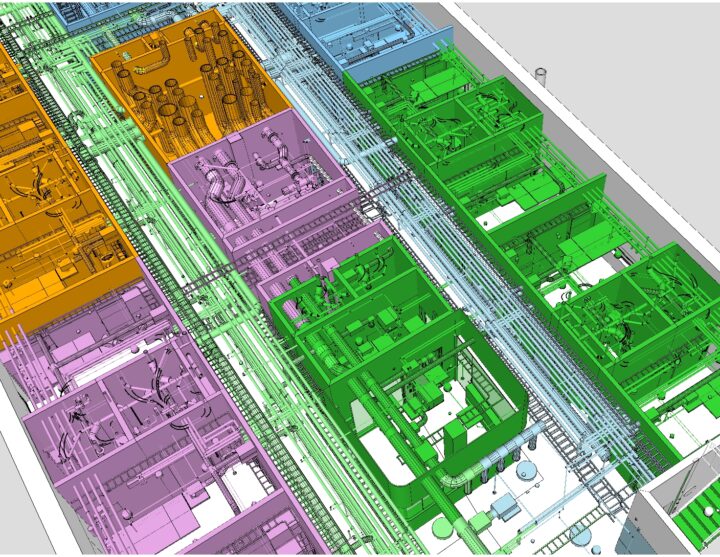Beware of Dark BIM Data!
25.10.2022
All hallow’s eve (Halloween) is coming. The darker half of the year is closing in for us Finns. It is a good time to look into the dark side of the BIM data.

Don’t worry. Not all hope is lost. Darth Vader still has goodness in his heart. With the right tools and workflows, we can bring dark BIM data back into the light.
What is Dark Data?
Dark data is in simple terms any data that the organization collects, but cannot use to derive insights or drive decisions (see for example Wikipedia for more information).
My definition is a little bit broader, but the idea is the same. Dark times are upon us if the construction industry is unable to benefit from data. The reasons for this are many.
Companies don’t have the right tools, people, skills, processes, or in general, resources to wrangle, analyze and use the data.
Let’s look at these from a BIM perspective.
What is Dark BIM Data and Where It Comes from?
There are multiple different kinds of dark data in BIM. Let’s take a look at them…
1. The wickedness of the unwicked

Designers add quite a lot of extra objects and properties to models, which are not useful for others. This is probably the most obvious reason for dark data.
They don’t do it out of wickedness. These are objects and properties, which help designers create reports and drawings and use their model author tool in a more efficient way.
The problem is that this data ends up in the IFC models. Unnecessary data causes unnecessary issues and make data usage less reliable. We don’t want that.
2. Extra skeletons in the BIM author tool’s closet
Model author tools export a lot of extra data to IFC. Properties are exported both in IFC schema-based property sets and model author tools’ own property sets as duplicate data sets. Many times to three different fields or places.
There also are round-tripping data including drawing details like pencil colors, line styles, and widths. And a lot of default data, which can be created by unused features in the model author tool. The problem is that the designer doesn’t make explicit design decisions to create this data. How can the data receiver and user know which is actual data and which default?

3. The devil is in the details
Over the years manufacturers have gone crazy with the BIM objects of their products. There are bolts and nuts, bells and whistles modeled even inside the objects with thousands of polygons.
Extra details have basically zero value because the BIM users cannot even see them. This makes the file sizes huge and 3D rendering the models a major issue.

You might think that in the age of cloud computing this would not be an issue. The truth is, that we still don’t have software or computers for each corner of a construction project, which can easily render all that extra geometry. In the worst case, this makes the whole model too hard or even impossible to use.
In addition to this, in big projects, models are updated on a weekly or even daily basis. Over time a huge amount of extra data will pile up. At some point, this will be an ecological issue also. All that extra data is uploaded, downloaded, processed, and stored. It cannot be good. It’s dark data.
4. Born dead data
If you are not careful the jack-o’-lanterns of BIM will imprison your data. One surprising form of dark data is data trapped inside open BIM applications.
These carved pumpkins, for example, many model-checking tools nowadays have features, which enable the users to classify the objects or even normalize property data. These ‘smart’ features are indeed a very efficient way – to create dark data.
While maybe useful in model checking, this enriched data is basically trapped inside the application that creates them. The same applies to many BIM platforms or construction management systems.
You are able to enrich the data, but not to get it out from the application for further and scalable use. From an open BIM point of view, this is dark data. Or at least grey. Mostly unused. There are good business reasons for this for these applications, but not very good reasons for the actual users or for the industry and the flow of open BIM data.
5. Deformed data
One of the main bottlenecks in BIM industry is inconsistent data. The BIM data is created from multiple different sources.
Different disciplines, different model author tools, different companies, projects, and so on… This is just how it is. All these create different data.
In order to use it together in an efficient and scalable way, it first needs to be unified and made consistent. If you don’t make the data consistent, it is basically dark – useless.
6. Slow as hell data
Data that comes too late, is useless. If you need to make a decision today, big or small, you need the data today. If the data is available two weeks or a week from now, or tomorrow even, it doesn’t have any value for you.
When the data finally arrives, it is already old data. Many things have already been changed. Design and production have gone forward. Making a decision with last week’s data rarely is a valid option. So, data can become dark and left unused also because of inefficient data flow.
7. The unborn data
If you don’t have the data, you cannot use it. The problem is, that you could have it. The potential is there, but companies don’t have the right tools and skills to take the advance of it.
You collect BIM data, maybe even check it, but most of it, even usable data, is left unused because there are no smart workflows and tools to wrangle it to fit for purpose.
Manual and iterative workflows take too many resources, cost too much, and are simply a too difficult and inefficient way to make BIM data usable and thus scale BIM usage.
Set up your bonfires and harness Simplebim’s cleansing power
With all these different sources of dark data, do we even stand a chance? Yes. This Halloween let Simplebim be your guiding light out of the BIM darkness into the data-driven construction industry.
Simplebim has state-of-the-art ways to clean up the data. Trim and filter out extra objects and properties from the models, whether the designers or model author tools create them.

Simplebim automatically optimizes the geometry structures in IFC. In addition, the extra geometry can be removed, or even simplified. One innovative way to do it is to boxify the geometry. This can reduce the file size up to 90% and the objects can still be recognized. 100 million Minecraft users cannot be wrong! (Stay tuned, this feature is coming ups in Simplebim 10).

One of the key features of Simplebim is that you can make the BIM data consistent no matter where it was created and by whom. In an automated way.
Once the data is consistent there’s a fast array of automated features to enrich the data further for. Classification, quantities, locations, calculated values, aggregated values, and even derived objects. You name it.

Since all this can be automated in a centralized way, the data is always there when your downstream needs it. In every project, for every update, to all the models from all disciplines. Simplebim fully supports the true open BIM workflow. Enriched data is not trapped inside of it, but can be exported back to IFC for further use in hundreds of downstream applications.
Once the data is enriched, it can be automatically analysed further in any open BIM or BI solution. And even connected to other data sources in an automated way. Whenever the models are updated, the connections are too. This again enables you to use BIM in a divination game of a lifetime.
Looking into the future has never been more real in construction than now. And you don’t even have to lose a good night’s sleep practicing vigil to make BIM work.
So, trick-or-treat?
Some of you might feel sad about all this dark data. Where do all the deleted bits go? Is there heaven and hell on the internet? I don’t know. But I do know, there’s hope for all the wandering soles and Darth Vaders of BIM.
Here in Finland, it is customary to create a sea of light for cemeteries on special holidays. Including Halloween. Let Simplebim be your sea of light to bring your dark BIM data into the light. Book your free trial today. Happy Halloween everyone!


